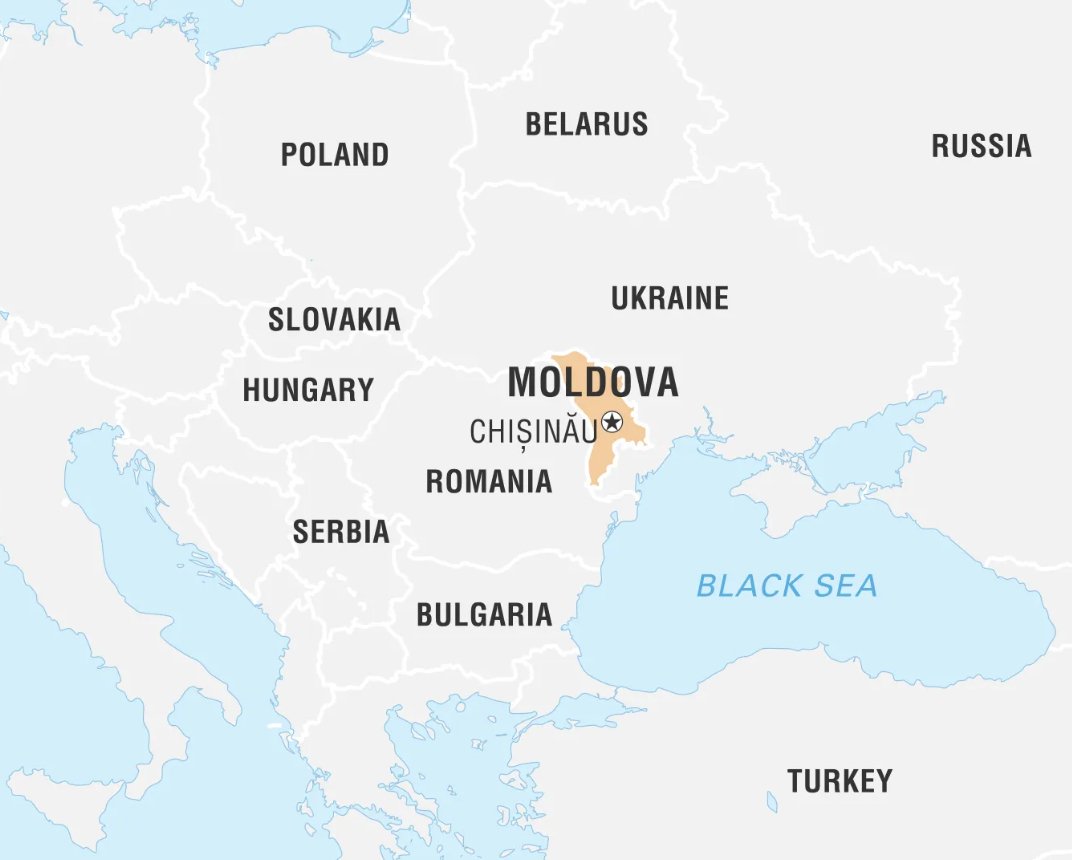Moldova's Wine Revival: A Story of Grit and Grapes Reclaimed
/When it comes to wine, Moldova is unlikely to be the first—or even the fiftieth—country that comes to mind, especially for Americans. Yet its winemaking tradition runs deep, with roots stretching back thousands of years. As of 2018, the country produces around 2 million hectolitres of wine and ranks as the 11th largest wine producer in Europe.
Moldova's wine industry is a story of resilience and renewal, shaped by its complicated relationship with Russia. This small Eastern European nation, sandwiched between Romania and Ukraine, has weathered political storms and economic embargoes to emerge as one of Europe's most intriguing wine regions.
Map: Britannica
Beginning in the 1930s, during the Soviet era, Moldova and other nearby countries like Georgia, Ukraine, and Armenia became wine factories for the vast USSR market. Traditional winemaking was transformed into industrial production during this time.
As Moldovian wine reviewer for Wine Enthusiast, Aleks Zecevic noted in a recent seminar, "Enormous industrial facilities were constructed during the Soviet era. Train tracks would stop right in front of the winery so they could pack the wine and quickly deliver it across the Soviet Union."
The Soviet approach prioritized quantity over quality. Indigenous grape varieties were often sidelined in favor of international varieties that could produce higher yields. Wine was treated as a commodity rather than a craft, with little emphasis on terroir expression or artisanal techniques.
The Collapse and Prohibition Impacts
Then, in the mid-1980s, things got even worse. Mikhail Gorbachev launched an anti-alcohol campaign as part of his perestroika reforms, and Moldova's wine industry was devastated. Vineyards were uprooted, production plummeted, and facilities stood partially abandoned. This Soviet "prohibition" dealt a severe blow to a region where winemaking had been central to cultural identity for centuries.
The collapse of the Soviet Union in 1991 brought further challenges. Without the guaranteed Soviet market, many wineries struggled to adapt. The transition period saw many once-productive vineyards abandoned and massive wine facilities repurposed. "Huge winemaking facilities were turned into restaurants and art galleries,” said Zecevic.
The Quality Renaissance
Vineyard Views, MOldova. Photo: @sergiu_barancean
The early 2000s marked the beginning of Moldova's wine renaissance. Released from Soviet production quotas, a gradual return to quality occurred with a new generation of winemakers who began making, once again, authentic, terroir-reflective wines. Indigenous grape varieties like Fetească Albă, Fetească Neagră, and Rară Neagră were rediscovered and replanted.
Small boutique producers began to emerge alongside the larger established wineries. "At the moment, in Moldova, there's a big push for people who have one to ten acres or maybe a little more to bottle their own wines and do some experimental things," explained Zecevic.
These smaller producers often embrace traditional methods while incorporating modern winemaking techniques. There's a growing focus on expressing Moldova's unique terroir, particularly in regions like Purcari, which has limestone-rich soils that can produce distinctive wines with mineral character.
Political Tension and Russian Embargoes
Moldova's wine revival has been repeatedly threatened by political tensions with Russia. In 2006, Russia imposed its first wine embargo against Moldova, ostensibly for health reasons but widely viewed as political retaliation for Moldova's westward tilt. The embargo devastated the industry, which relied heavily on the Russian market.
A second Russian embargo followed in 2013, further pushing Moldovan winemakers to diversify their markets and improve quality to compete internationally. These challenges have ultimately strengthened the industry, forcing producers to look beyond the familiar Russian market and to produce wines that meet Western European and American standards.
Americans facing political frustrations today might find inspiration in Moldova's story—how a small country turned adversity into advantage while navigating difficult political waters. Sometimes, the most remarkable reinventions emerge not despite but because of challenging times.
The Present and Future
Today, Moldova's wine industry is at an exciting crossroads. Smaller, family-run wineries are now gaining international recognition, joining the larger producers already on the global stage. Modern techniques like temperature-controlled fermentation and judicious oak aging are becoming the norm. Some producers, as Zecevic noted, are "trying to make wines like they do in France, but often using local grapes."
With deep roots, native grape varieties, and a new wave of dedicated winemakers, Moldova’s wine producers are showing the world that political and economic challenges can sometimes lead to creative renewal and unexpected opportunity..
Learn more about Moldovan wine—and which bottles to look for (fair warning: they’re not easy to find!)—at wine-searcher.com.








